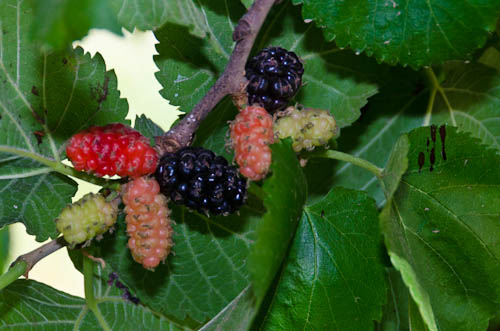
Persian Fruiting Mulberries in various stages of ripening
Persian Mulberries fruit on second year wood. How do I know that? In our budwood orchards we prune almost all of it off each winter to force new growth for budding and grafting. Even with all the new growth by summer, there is not enough fruit to take a decent photo.
This year I asked that one tree of each variety of fruiting mulberries be spared from the pruning crew so I could take photos. Last Friday, James Shao mentioned that he wanted to pick some mulberries for a fruit tasting session at a nursery on Saturday. "Not until I take photos", I replied with concern. So last Friday we found each of the unpruned trees and had a feast!
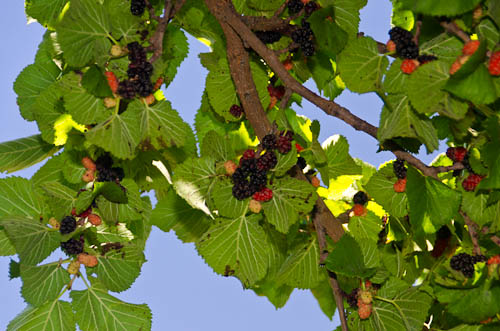
Persian Fruiting Mulberries - loaded!
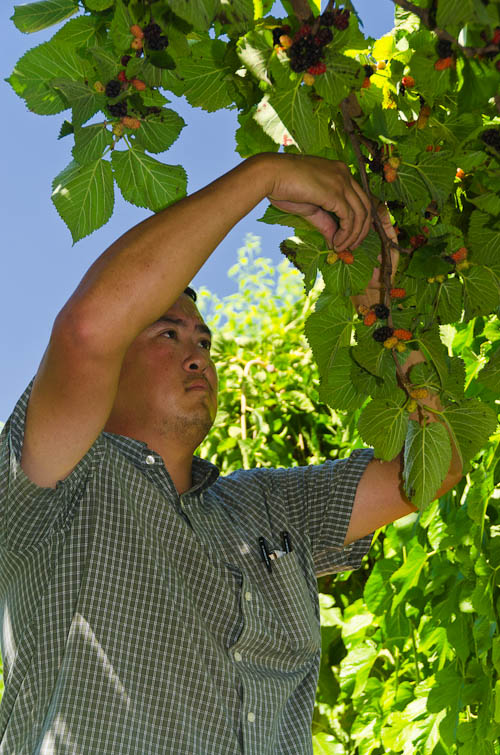
Salesman James Shao picking Persian Fruiting Mulberries
I have to admit, I have not eaten a lot of mulberries in the past for the very reason I could not photograph them. They were usually gone - what few were there were eaten either by employees or the birds. The exception was the Pakistan Fruiting Mulberries where we had the Cooke's Pakistan in testing besides the original Pakistan from years earlier. And I really liked them.
So Friday I was in for a surprise treat. After taking a number of images, it was time to do a personal taste test. Wow! These Persian Fruiting Mulberries were packed with flavor and sweetness. I clearly like them better than blackberries!
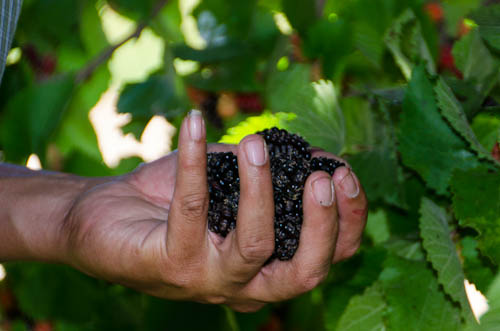
It only took a few picked berries to realize I made a mistake not bringing some paper towels to clean my fingers. They are soft and squirt juice easily and I was loath to wipe my fingers on my pants so I could handle the camera again.
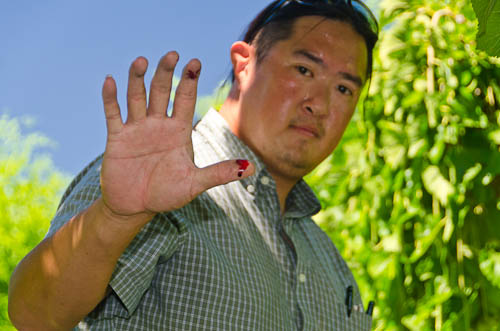
James showing Mulberry juice on his fingers - good but messy.
You have to plant a fruiting mulberry tree in the right place. They are not only messy on your fingers, but can be messy period. You have to plan for fruit drop on the ground - preferably where it does not stain concrete or other material you want to protect. Having it in an orchard or field setting is ideal or in a shrub bed. I generally try not to plant a tree in a lawn setting and this is one I clearly would keep the mess away from the lawn. Birds really love Mulberries too. Fortunately there are enough berries for you and the birds. Unfortunately, what purple fruit goes in the bird comes out purple from the other end.
The Persian Fruiting Mulberry and the Black Beauty Fruiting Mulberry are really just fast growing bushes. For years we grew them in a tree form by grafting them on top of a 5 foot "standard". In recent years, we heeded the demand to make the fruit easier to pick by lowering the tree form to a 4 foot standard and also to grow them in a bush form. You know "Ring around the Mulberry Bush" kind of form. Seems to be popular as quantities continue to increase dramatically.
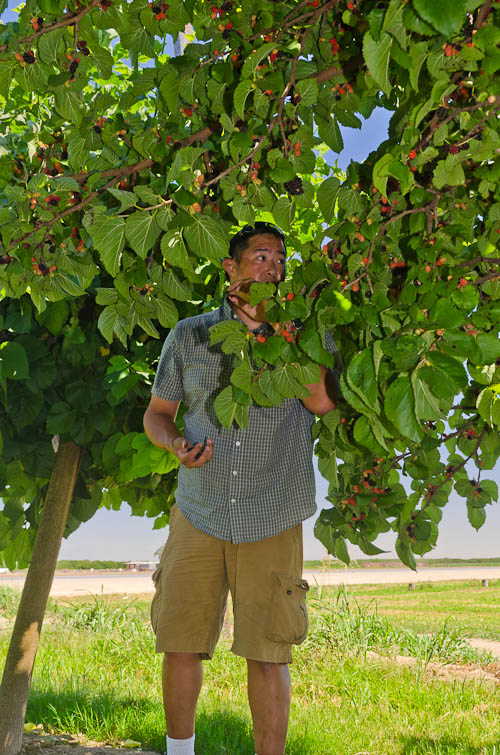
James in the Persian Mulberry Tree
Later in the orchard, we came across the Black Beauty Fruiting Mulberry. The fruit was either a week behind the Persian or the birds got all the black ones. Most were still red with very few black fruit. Looks like next week would be a better time to taste when more are ripe.
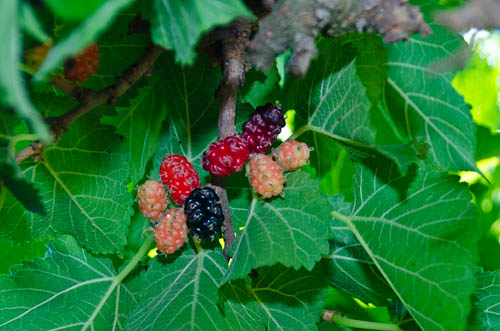
Black Beauty Fruiting Mulberry - need about another week for more to turn black.
Friday I tasted my first Black Beauty Mulberry. BAM! The flavor exploded in my mouth - one of the most enjoyable taste experiences of my life. I'll be back for more from this tree later this week.
In the wrong place, theses trees would be easy to dislike. But I cannot forget the wonderful bursts of flavor each time I ate the fruit and it seems like I am not alone as thousands of families must be finding the right places to enjoy these trees (and bushes).
More to come.
Ron Ludekens 6-27-2011

